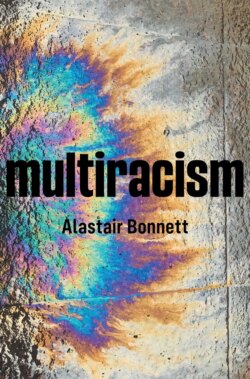Читать книгу Multiracism - Alastair Bonnett - Страница 17
Organizing Multiracism
ОглавлениеRacism is, in large part, created and enabled by modernity, and just as there are diverse modernities so there are diverse racisms. These forms connect and overlap and are unequal in terms of their power. This is ‘multiracism’. I also argue that debate on racism needs to be conceptually and empirically expanded to engage essentializing forms of ethnic discrimination. These arguments are developed thematically across the following five chapters. Chapter 1 introduces and critiques existing explanations of global racism and then outlines the theoretical basis of this book, fleshing out what is meant by ‘modernities’ and explaining why an understanding of their pluralization helps us understand diverse racisms. This approach is not presented as an entirely satisfactory or complete solution but as a useful way forward. Chapter 2 examines the racist use of history by drawing on examples from Rwanda, Turkey, and China. It then looks at how nostalgias that were shaped in part by Western colonialism feed into racism, in Cambodia, Rwanda, Eritrea, and China. Across Asia and Africa religion is often central to practices and ideologies of ethnicized and racialized intolerance and exclusion. Chapter 3 addresses the relationship between religion and racism, first in radical Islamism, then in casteism in India and, finally, in anti-Muslim racism in India and China. Chapter 4 discusses politics, economics, and nationalism, exploring ‘red racism’ in the USSR, capitalist racism in Indonesia, racist nationalism in South Korea, and the intersection of capitalism, socialism, nationalism, and religion in South Africa. Chapter 5 uses Japanese examples to look at the interplay of whiteness and the globalization of consumer culture, before examining the changing nature of anti-Black racism in North Africa and, more specifically, in Morocco.
At first, I was tempted to organize the book by place: a chapter on India, one on Morocco, and so forth. However, it soon became clear that this would have given free rein to geographical reductionism and determinism. In other words, it would have made it appear that certain forms of racism are anchored in particular places. An uncritical reliance on geographical labels homogenizes and naturalizes nations and regions. If we are not wary of the generalizations and borderlines that spill from the world map, we not only misrepresent racism but, by reifying ethno-national units, reproduce ethno-racial narratives.
Good advice no doubt, but do I stick to it? Not really. After all, my chapters may be thematic but my examples are nationally labelled. Avoiding geocentrism is not easy. It may be useful to think of geocentrism as an inevitable problematic rather than as something that can ever be completely banished. The ‘where’ of racism draws inevitably on a variety of geographical essentialisms that may, as Diana Fuss says of essentialism more generally, be unavoidable and a risk ‘worth taking’.86 Whether we are discussing ‘racism in the West’ or ‘racism in Asia’, ‘China’, or ‘Xinjiang province’, we are dealing with questionable but necessary categories.
